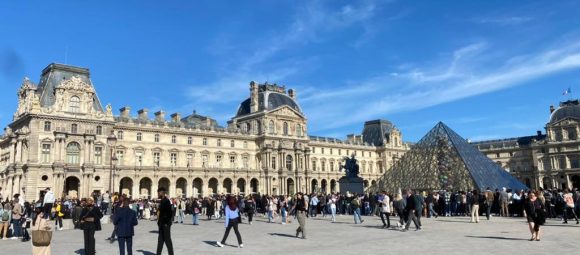Cultural Capital of November: Istanbul
ANNO Media
There are cities you visit, and there are cities that visit you.
Istanbul belongs to the second kind.
In November, when the mists settle over the Bosphorus and the sun dips earlier behind its seven hills, the city reveals its deeper soul — not of conquest or commerce, but of memory.
A Bridge Between Worlds
No other city sits so literally between worlds. The morning ferries carry students and bankers from Asia to Europe, their journey across the Bosphorus shorter than a cup of tea yet older than empires. Behind them rise the domes of mosques and the glass of new towers, as if two centuries coexist on the same skyline.
The Byzantines once called it Constantinople, “the city of Constantine”, the Ottomans İstanbul, “to the city”, but every civilization left its script and melody. Marble columns from ancient Rome stand beside Arabic calligraphy; the smell of Turkish coffee mingles with Italian espresso; Sufi chants echo not far from jazz clubs in Beyoğlu.
This mosaic defines Istanbul. It is neither entirely Western nor Eastern but something infinitely more interesting – the pulse of coexistence itself.

The Art of Layers
To walk through Istanbul is to travel through time. Beneath your feet lie the Roman cisterns built by emperors; above your head rise the minarets of sultans. Every building tells a story, and every story opens into another.
The Hagia Sophia remains the city’s crown. Once the greatest church in Christendom, later an imperial mosque, today again a mosque – yet beyond labels it remains what it has always been: a temple of light. When dawn filters through its high windows, the marble veined like water, you feel the architecture breathe.
Facing it across Sultanahmet Square stands the Blue Mosque, elegant as a poem, its İznik tiles shimmering like the sea it overlooks. Nearby, the mosaics of Chora Church preserve fragments of the Byzantine world – saints, angels, and golden skies still glowing after a thousand years.
Further north, the district of Balat tells a humbler story. Its crooked wooden houses, once home to Greek and Jewish families, lean together like friends whispering old secrets. Each colour – turquoise, mustard, faded pink – seems to remember someone who left and never returned.
The Golden Horn: Where Empires Reflected Themselves
The inlet known as the Golden Horn has always been Istanbul’s mirror. Its calm waters once held the galleys of Byzantium, then the fleets of Venice, now the reflections of bridges and seagulls.
Cross the Galata Bridge and you step into another rhythm. The fishermen cast their lines while trams ring through Karaköy and Beyoğlu. Above it all rises the Galata Tower, built by Genoese merchants seven centuries ago, still watching over lovers and dreamers.
In the evening, take the funicular up to Istiklal Caddesi. Beneath its nineteenth-century façades, you’ll find bookshops, patisseries, art galleries, and a dozen worlds colliding. One moment you hear Chopin played on an old piano; the next, the call to prayer from a side street. This coexistence – fragile yet real – is Istanbul’s essence.
 The Modern Gaze
The Modern Gaze
Modern Istanbul is not content to live in nostalgia. The city’s artists and architects continually reinterpret its legacy.
The Istanbul Modern, reopened on the Bosphorus in 2024, feels like a dialogue between past and future – a glass vessel of light housing contemporary Turkish art while framing the same sea that inspired ancient poets. Across the water, the Pera Museum keeps alive the memories of Orientalist painters who once romanticized the East.
There are new creative districts too: in Bomonti, former breweries now host concerts and exhibitions; in Kadıköy, street art covers entire façades; in Balat, cafés serve as miniature galleries. Istanbul today speaks many languages — film, design, literature, digital art — yet its heartbeat remains unmistakably its own.

Palaces and Poetry
Every empire that ruled here left traces of splendour.
At Topkapı Palace, tulip gardens still bloom above the Bosphorus, and emerald-studded daggers gleam behind glass. The corridors smell faintly of old paper and rosewater, and you can almost hear the rustle of silk kaftans in the breeze.
Later sultans built Dolmabahçe Palace, a symphony of chandeliers and marble staircases facing the sea. Here Atatürk worked in his final years, closing the Ottoman chapter and opening the Turkish Republic — another bridge between eras.
But perhaps Istanbul’s true palace is the ferry itself. Standing at the rail as seagulls follow, tea in hand, you watch continents drift by like ideas.

A City for November
November suits Istanbul. The tourist crowds fade, the light softens, and the city becomes contemplative. From the rooftop of the Pierre Loti Café in Eyüp, the view of the Golden Horn glows in bronze tones; down below, cemeteries rest beneath cypress trees, and a hush descends at sunset.
Wander through the Grand Bazaar and you’ll sense history’s hum — not a museum silence, but a living pulse of bargaining, storytelling, survival. Or cross to Asia and explore Üsküdar, where fishermen mend nets beside mosques painted the colour of dawn.
At night, Istanbul sparkles again: domes outlined in moonlight, ferries lit like floating lanterns, and the distant hum of music from rooftop terraces. Few cities are so alive and yet so aware of their own fragility.
The Spirit of Two Dreams
Istanbul has always lived in two dreams — one of grandeur, one of grace.
It remembers empire but also daily life: the swirl of tea, the scent of simit bread, the laughter of children feeding pigeons before the mosques.
Writers from Pierre Loti to Orhan Pamuk have tried to capture its melancholy, that tender sadness the Turks call hüzün — not sorrow, but the sweetness of time passing. Perhaps that’s why Istanbul feels eternal yet human, monumental yet intimate.
For ANNO Media’s journey through cultural capitals, Istanbul stands as a reminder that art, history, and spirituality meet not in perfection but in coexistence. It’s the city that teaches us how to live between worlds — and how to find beauty in the space between.



